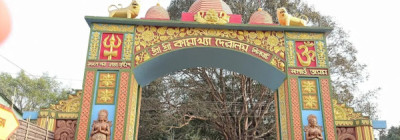While the world-famous Kamakhya Temple in Guwahati draws millions of devotees, few are aware of the equally sacred yet lesser-known Second Kamakhya Temple, located in Silghat, Kaliabor, in the Nagaon district of Assam. Nestled atop a hillock by the banks of the mighty Brahmaputra River, this temple is a hidden spiritual gem and a site of profound religious and historical significance.
Location & Architecture
The Silghat Kamakhya Temple, also known as the Second Shakti Peeth of Assam, sits majestically on Kamakhya Hill and reflects a unique blend of Salasthamba dynasty architecture and Ahom-era design elements. Adjacent to it lies an ancient Lord Shiva temple, adding to the spiritual ambiance of this sacred location.
History & Restoration
As per local beliefs, the temple was originally established in the 8th century by King Banamaladeva of the Salasthamba dynasty, at a place then known as Kamakut. Over time, the temple was destroyed due to natural calamities. However, it was rebuilt in 1745 AD during the reign of Ahom King Swargadeo Pramatta Singha, restoring its sacred status for devotees across the region.
Divine Significance & Worship
The Silghat Kamakhya Temple is believed to enshrine the divine feminine energy of Goddess Kamakhya, much like the main shrine in Guwahati. However, it remains peaceful and less commercialized, making it ideal for quiet worship, meditation, and spiritual reflection.
Festivals & Traditions
The temple comes alive during the Ambubachi Mela, attracting pilgrims who seek to connect with ancient Tantric rituals and Shakti worship. Despite being lesser-known, the temple follows authentic traditions and puja rituals, preserving Assam’s rich spiritual legacy.
Future of Religious Tourism
Local communities and temple authorities strongly believe that with focused promotion and infrastructural support, the Silghat Kamakhya Temple can evolve into a major pilgrimage and religious tourism destination. Its tranquil surroundings, historical background, and spiritual importance make it a must-visit for devotees and explorers alike.

